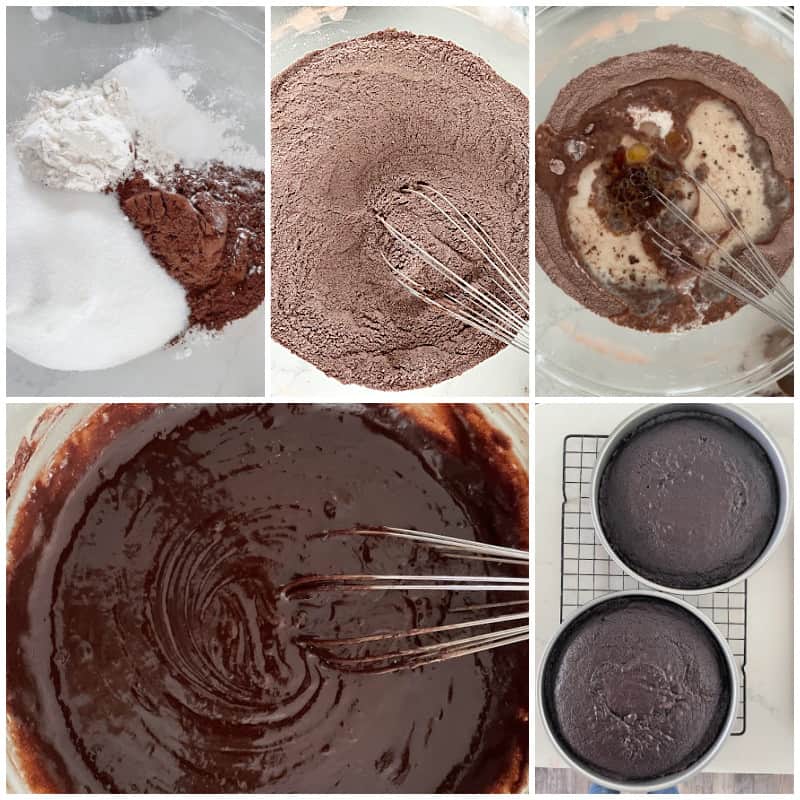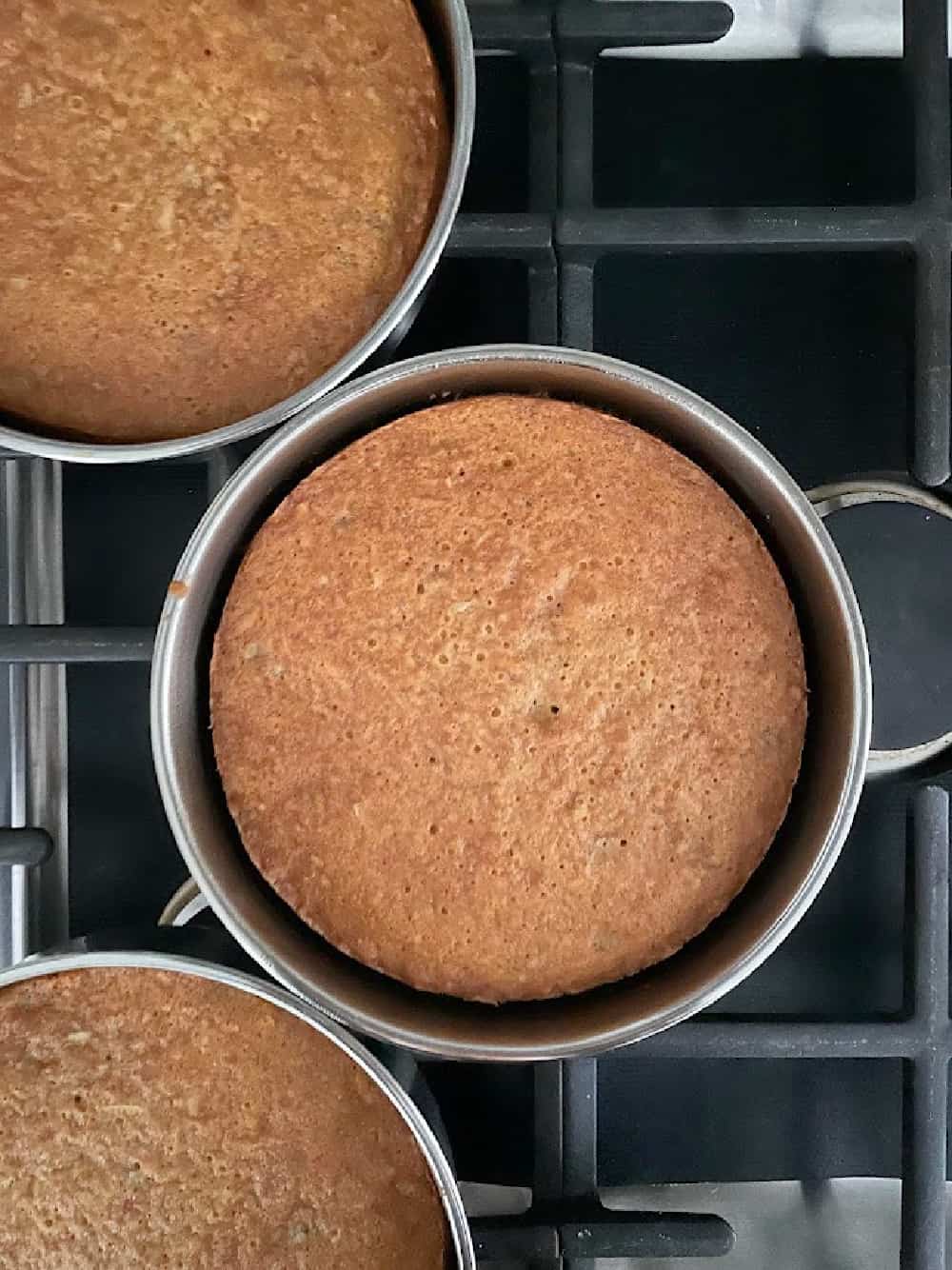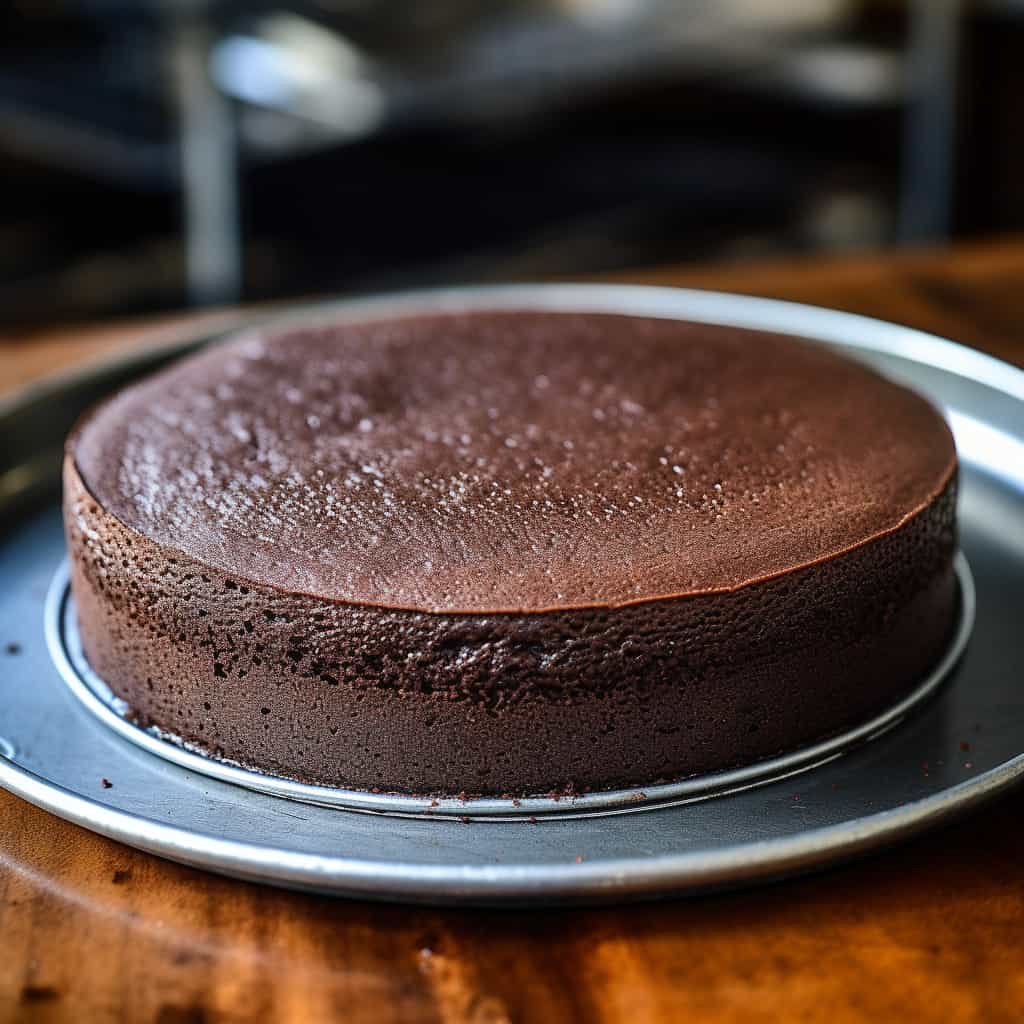5 Expert Tips How to Tell Your Cake Is Done
As an Amazon Associate, I earn from qualifying purchases. Read the full disclosure here.
5 Expert Tips How to Tell Your Cake Is Done! The journey towards achieving perfect cake doneness is nothing short of magical.
Nothing compares to the magical feeling of making a cake from scratch. All the measuring, mixing, and pouring leads to a delightful aroma filling your kitchen and a longing anticipation of the promised cake’s perfection. But how do you know when the cake is ready?
Venture too soon into the oven, and you’ll find a gooey mess fit for a mud pie competition. Delay, and you’re left with a crumbly brick more suitable as a doorstop than a delightful dessert. That’s why expert bakers walk a fine line between undercooked mush and overcooked crunch. Get it just right, and you have a delicious dessert sure to be the envy of your friends!
But fret not! With a blend of science, art, and intuition, identifying that sweet spot of perfect doneness becomes a cakewalk (pun intended!).
Today, we’re delving into the subtle signs, tried-and-true tests, like the spring back test, and the unsung methods that will ensure your cake emerges from the oven in tender, moist perfection every single time with our cake baking tips to make sure your cake is baked to perfection!
And to clear up those common cake dilemmas, we’ve thrown in a handy FAQ section below for even more cake baking tips for doneness.
So, tie on that apron, preheat the oven, and let’s demystify the art of cake doneness together how to tell your cake is done! Follow these steps to bake a perfectly delicious dessert every time!
The Art of Perfect Cake Doneness – Cake Baking Tips How to Tell Your Cake Is Done
1. The Classic Toothpick Test
The toothpick test is a classic technique that bakers have sworn by for years to test how to tell your cake is done. It’s straightforward and requires no special equipment aside from a humble toothpick. Here’s how to do it:
- Once the minimum baking time approaches, grab a clean toothpick and insert it into the cake’s center.
- Pull the toothpick out and inspect it. If it comes out clean or with a few tiny crumbs clinging to it, your cake has baked to perfection.
- However, if the toothpick emerges with wet batter on it, your cake needs more time in the oven. Keep checking every few minutes to avoid overbaking.
2. Feel the Spring: The Spring Back Test for Cake Doneness
The spring back test is a tactile method to check for doneness:
- To do the spring back test, lightly press the center of the cake with your fingertip.
- A perfectly baked cake will spring back to its original shape, indicating it’s done.
- If it leaves a dent or feels soggy, it needs more time to bake. Continue checking with spring back test at short intervals to ensure perfect doneness.
3. Visual Feast: Eyeballing Cake Doneness
Visual cues are vital in baking. Here’s what to look for:
- A golden brown hue is often indicative of a well-baked cake, especially around the edges.
- Observe the cake’s surface; a slight dome or crack along the top is common and can indicate doneness.
- Remember, each recipe and oven is unique, so it will take some practice to learn to judge doneness by sight.
4. Timing it Right: The Time Check for Cake Doneness
Time is a crucial factor, but it’s not absolute:
- Always follow the recommended baking time in the recipe as a basic guideline.
- However, start checking for doneness a few minutes before the lower end of the time range to catch any variations in your oven’s temperature or the size of your baking tin.
5. The Precise Bake: Temperature Check for Cake Doneness
For a more scientific approach, an instant-read thermometer is your friend:
- Insert the thermometer into the center of the cake, avoiding any fruit or nuts that could give a false reading.
- A fully baked cake will register around 210°F in the center, which is the point where sugars caramelise and starches gelatinise, giving the cake its structure and flavor.
- This method is especially useful for larger or denser cakes where visual and tactile cues may be less accurate.
Each of these methods offers a different way to ensure your cake is baked to perfection. Over time, you may find one method suits you better, or you may use a combination of these techniques to nail cake doneness every time. Happy baking!
Resolving Cake Baking Dilemmas: Your FAQ Guide
Q: Why is my cake wet in the middle?
A: The most common reason for a wet middle is that the cake is underbaked. Utilize the methods discussed above to accurately determine the doneness of your cake and make necessary adjustments to the baking time if needed.
Q: Can I save an under-baked cake?
A: Yes, if it’s slightly underbaked, you can pop it back in the oven. If it’s cooled already, cover the top with foil to prevent over-browning.
Q: What if my cake is overbaked?
A: Not to worry! Trim off any hard edges and cover with frosting. Or, embrace the crunch and serve with a scoop of ice cream.
Q: How can I ensure even baking?
A: Rotate your cake halfway through the baking time and use an oven thermometer to ensure accurate temperature.
Tapping into the subtle cues of cake doneness takes a sprinkle of patience, a pinch of practice, and heaps of love for baking. The more you bake, the better you get at recognizing the sweet spot of perfect doneness.
Q: Does baking time vary between metal and glass pans?
A: Yes, the material of your baking pan can indeed affect the baking time. Metal pans heat up and cool down quickly which can lead to a shorter baking time, while glass pans retain heat longer, potentially requiring a longer bake time. However, glass pans also stay hot outside the oven for longer, which can lead to continued cooking even after the pan is out of the oven.
It’s advisable to reduce the oven temperature by about 25°F when baking with glass pans to prevent over-browning and over-baking. As always, utilize the doneness tests mentioned above to ensure your cake is baked to perfection, regardless of the type of pan you use.
These 5 Tips How to Tell Your Cake Is Done with all the questions you may come across when you’re baking your cake are now answered! Now, let us eat cake!
Share on Pinterest, Instagram and Facebook!
More Baking Tips & Deliciousness!
- Ultimate Gooey Brownies
- Essential Tips for Perfect Muffin Baking!
- Easy Pie Crust Tips
- Cherry Cheesecake Swirl Brownies
- Healthy Banana Nut Bread – 2 Bananas
- Lemon White Chocolate Chip Cookies
- Perfect Banana Chocolate Chip Muffins!
- The Perfect Cheesecake Experience
- How To – Baking Perfect Cookie Tips
- Top Baking Tips for Quick Breads
- Conversion Charts & Kitchen Tips
- Quickest Ways to Soften Butter
- Freezing & Thawing Bananas
- The Ultimate Graham Cracker Crust – 3 Ingredients
- 16 hacks to make your boxed cake taste better @ MSN (My #9 hack is featured!)




